Browning Citori 725 Field 28" 12 Gauge Shotgun 3" Over/Under – 181653004 For Sale
$2,499.99
The Browning Citori 725 Field 28″ 12 Gauge Shotgun 3″ Over/Under (model 181653004) embodies balance and excellence, drawing from the legacy of John M. Browning’s B25 Superposed design. The 2020 edition features a modern low-profile receiver that enhances its renowned durability, thanks to a full-width hinge pin and tapered locking bolt, offering an intuitive shooting experience. Engineered with a mechanical FireLite trigger for precise shots and equipped with Inflex Technology to reduce recoil, it also includes the Invector-DS choke system for adaptability. Aesthetically, it boasts a gloss oil finish and grade II/III walnut stock, enhanced by new style engraving. Ideal for both hunting and sporting clays, the Citori 725 Field delivers superior craftsmanship and performance, appealing to both enthusiasts and serious shooters.
What is the difference between Citori and Citori 725?
The main differences between the Citori and the Citori 725, both of which are over-and-under shotguns manufactured by Browning, are in their design and features:
1. **Action and Locking Mechanism**: The Citori 725 features a low-profile receiver for improved balance and handling, unlike the traditional receiver on the standard Citori. The 725 also utilizes a mechanical trigger, as opposed to the inertia trigger on the standard Citori.
2. **Trigger System**: The Citori 725 employs Browning’s Fire Lite mechanical trigger system that offers a crisper pull and faster lock times compared to the Citori’s trigger system.
3. **Recoil Management**: The Citori 725 comes with an Inflex II recoil pad, which is designed to reduce felt recoil and aid in quicker follow-up shots. This system is a marked improvement over the recoil pads typically found on the standard Citori models.
4. **Barrel Features**: The Citori 725 often includes Browning’s Vector Pro lengthened forcing cones for improved shot patterning and reduced shot deformation. The standard Citori may not have this feature.
5. **Chokes**: The 725 comes equipped with the Invector-DS choke system, which offers a longer taper for improved shot spread and consistency. The standard Citori generally uses the Invector-Plus choke system.
6. **Overall Design and Weight**: The Citori 725 is typically designed to be slightly lighter due to its lower-profile and more streamlined design, offering potentially better handling characteristics, especially for competitive shooting sports like sporting clays.
These differences reflect Browning’s intention to offer the Citori 725 as a modernized version of the traditional Citori, with enhancements geared towards improving performance in competitive contexts or for those shooters who appreciate these specific advancements.
Is the Browning Citori 725 a good gun?
The Browning Citori 725 is generally considered a good shotgun, particularly for sporting clays, trap, and hunting. It is praised for its quality construction, reliability, and excellent balance, making it popular among shooters. The 725 model is an evolution of the Citori line, offering features like an improved mechanical trigger and a lower profile receiver, which enhances handling. As with any firearm, personal preferences and intended use should guide your decision, but overall, it is well-regarded in the shooting community.
Is the Browning Citori worth the money?
The Browning Citori is generally considered worth the money by many enthusiasts and professionals. It is praised for its quality craftsmanship, durability, reliable performance, and the heritage associated with Browning firearms. However, whether it is worth the money can depend on individual preferences and needs, such as intended use (e.g., hunting, sport shooting), budget, and personal fit and feel. If possible, shooting the gun or consulting with other owners may help in making an informed decision.
What are the grade levels of Browning Citori?
The Browning Citori shotgun is available in several grade levels, which reflect differences in features, finish, and price. Common grade levels include:
1. **Grade I**: This is the base model with standard finishes and features.
2. **Grade II/III**: These models typically have enhanced wood and engraving compared to Grade I.
3. **Grade IV/V**: These grades offer even more detailed engraving and higher-quality wood.
There may be other limited edition or specialized grades released by Browning from time to time.
When did the Citori 725 come out?
The Browning Citori 725 was introduced in 2012.
What is the difference between Browning 725 and 825?
The main difference between the Browning 725 and the Browning 825 lies in their intended markets and design focus. The Browning 725 is a model typically available in the United States and is part of the Citori line. It features modern engineering and styling with performance-oriented features like the mechanical trigger system, low-profile receiver, and Invector-DS choke technology, making it suitable for both clay shooting and hunting.
On the other hand, the Browning 825 is a model that is more commonly found in the UK and European markets. While it shares some core characteristics with the 725, such as the basic over-and-under configuration, the differences often reflect regional preferences in terms of stock dimensions, engraving styles, or other cosmetic and ergonomic details.
It’s important to note that specific features and configurations can vary within each model based on the particular sub-variant or special edition being released, so it is always worthwhile to compare the specific details from authorized retailers or official product descriptions.
How much does a Browning Citori cost?
The cost of a Browning Citori can vary significantly based on factors such as the specific model, features, and condition (new or used). Typically, new Browning Citori shotguns start at around $1,500 and can go up to $4,000 or more for higher-end models. For the most accurate pricing, it’s best to check with authorized dealers or online gun retailers.
Does Browning 725 have mechanical trigger?
Yes, the Browning 725 features a mechanical trigger system.
Does Browning Citori have ejectors?
Yes, the Browning Citori features ejectors.
How long will a Browning Citori last?
The Browning Citori is known for its durability and high-quality construction. With proper care and regular maintenance, a Browning Citori can last for decades. Many users report their Citori shotguns functioning reliably for over 20 to 30 years, and sometimes even longer. The longevity of your specific shotgun will depend on factors such as use frequency, cleaning regimen, storage conditions, and whether it undergoes any significant wear or damage over time.
What is the difference between Browning Citori grade 1 and 2?
The primary differences between the Browning Citori Grade 1 and Grade 2 shotguns typically lie in their aesthetic and finish details. Here are the main distinctions:
1. **Wood Quality**: Grade 2 usually features superior wood quality compared to Grade 1, often with more attractive grain and figuring in the stock and forearm.
2. **Engraving**: Grade 2 often includes more intricate and detailed engraving on the receiver and action, enhancing its visual appeal.
3. **Finish**: The finish on Grade 2 models may be more polished and refined than that of Grade 1, contributing to a more luxurious appearance.
4. **Checkering**: The checkering pattern on the stock and grip might be more elaborate in Grade 2 as compared to Grade 1.
5. **Overall Appearance**: Due to the above factors, Grade 2 shotguns generally have a more premium aesthetic and are considered to have a higher-end finish compared to Grade 1.
These differences reflect in the gun’s price, with Grade 2 being more expensive than Grade 1 due to the enhanced materials and finishes.
Who makes Browning shotguns now?
Browning shotguns are currently manufactured by Browning Arms Company, which is a subsidiary of FN Herstal, a firearms manufacturer based in Belgium.
What is the difference between Browning Citori grade 1 and grade 2?
The primary differences between the Browning Citori Grade 1 and Grade 2 shotguns typically relate to aesthetics and materials, as both grades often share the same mechanical design and performance. Here are some common distinctions:
1. **Wood Quality and Finish**: Grade 2 usually features better-quality wood for the stock and forearm compared to Grade 1. This can include a nicer grain pattern and a more refined finish.
2. **Engraving**: Grade 2 models often come with more detailed or elaborate engraving on the receiver and other metal parts compared to the more basic engraving found on Grade 1 models.
3. **Checkering**: The checkering on the grip and forearm might be more intricate or detailed on a Grade 2 compared to Grade 1.
4. **Overall Aesthetics**: Grade 2 generally offers a more visually appealing package, although this does not necessarily affect the functionality or performance of the firearm.
These differences are mainly cosmetic, designed to appeal to shooters who appreciate higher aesthetic value and are willing to pay a premium for it.
What is the difference between 525 and 725?
The difference between 525 and 725 is 200.
What is the difference between 725 and 625?
The difference between 725 and 625 is 100.
| Product Line | Citori 725 Field |
|---|---|
| Action | Over/Under |
| Trigger Type | Triple |
| Sights | Ivory Bead Front |
| Barrel Material | Steel |
| Receiver Material | Steel |
| Stock Material | Black Walnut |
| Barrel Finish | Polished Blue |
| Receiver Finish | Silver Nitride |
| Stock Finish | Gloss Oil |
| Chamber Length | 3" |
| Length of Pull | 14-1/4" |
| Overall Length | 45-3/4" |
| Checkering | Cut 20 LPI |
| Chamber Finish | Chrome Plated |
| Recoil Pad | Inflex 2, Large |
| Trigger Finish | Gold Plated |
| Trigger Guard Engraving | Buck Mark in Gold |
| Trigger Guard Finish | Silver Nitride |
| Trigger Guard Material | Steel |
| Trigger Material | Alloy |
| Choke System | Invector-DS Flush |
| Chokes | Full, Modified, Improved Cylinder |
| Drop at Comb | 1-5/8" |
| Drop at Heel | 2-1/2" |
| Rib Width | 1/4" |
| Wood Grade | Grade II/III |
| Barrel Type | Vent Rib |
| Hand Orientation | Right |
Be the first to review “Browning Citori 725 Field 28" 12 Gauge Shotgun 3" Over/Under – 181653004” Cancel reply
Related products
Browning Citori 725 Field
Browning Citori 725 Field 28" 20 Gauge Shotgun 3" Over/Under – 181656004
Browning Citori 725 Field
Browning Citori 725 Field 410 Gauge Over/Under-Action Shotgun, Gloss Oil – 013530914
Browning Citori 725 Field
Browning Citori 725 Field 20 Gauge Over/Under-Action Shotgun, Gloss Oil – 0135306005
Browning Citori 725 Field
Browning Citori 725 Field 26" 12ga Walnut Stock Shotgun 0135303005
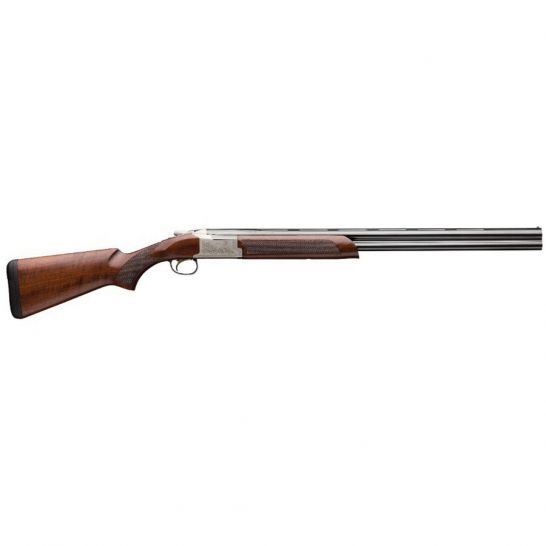
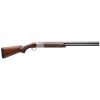
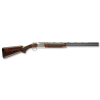
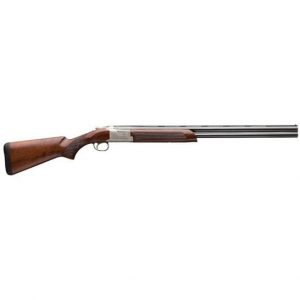
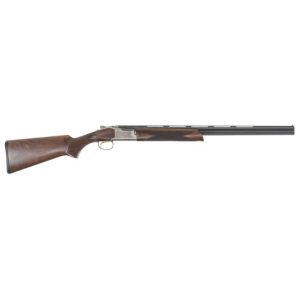
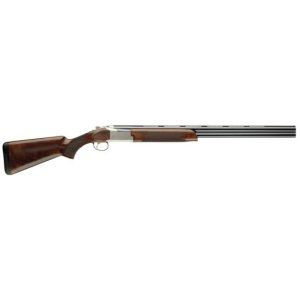
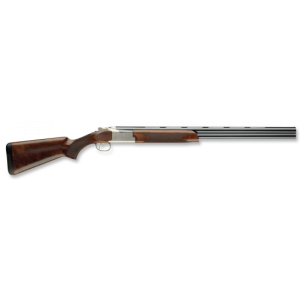
Reviews
There are no reviews yet.